Aplikasi design thinking dalam kalangan mahasiswa Asnaf: analisis kritis literatur [Application of design thinking among Asnaf students: a critical literature analysis]
Keywords:
Design Thinking (DT), Asnaf, MahasiswaAbstract
Design Thinking (DT) is a human-centered approach used to solve problems creatively and innovatively. It emphasizes a deep understanding of user needs, the creation of creative ideas and the development of practical solutions through an iterative process. This approach is widely applied in various fields such as education, business, product design and community development. In recent times, asnaf students often face multiple challenges that hinder their full potential in education and daily life. These obstacles include weaknesses in critical thinking skills and problem-solving, which are essential for academic success and subsequently, economic advancement. Thus, this study aims to critically analyze the application of DT as an innovative approach to empower asnaf students in overcoming academic and economic challenges. Using a qualitative methodology, this study analyzes the literature review related to DT and its specific relevance to asnaf students in academic and economic contexts. The findings indicate that DT has the potential to enhance critical thinking and problem-solving skills, contributing to improved academic performance and the economic capabilities of asnaf students in a positive direction. As an implication, this study urges stakeholders involved in supporting asnaf students to emphasize the use of DT in fostering inclusive and innovative education, in line with national and global development agendas.
[Design Thinking (DT) adalah pendekatan berpusatkan manusia yang digunakan untuk menyelesaikan masalah secara kreatif dan inovatif. Ia memberi penekanan kepada pemahaman mendalam terhadap keperluan pengguna, penciptaan idea yang kreatif dan pembangunan penyelesaian praktikal melalui proses iteratif. Pendekatan ini sering digunakan dalam pelbagai bidang seperti pendidikan, perniagaan, reka bentuk produk dan pembangunan komuniti. Dewasa ini, mahasiswa asnaf sering menghadapi pelbagai cabaran yang menghalang potensi penuh mereka dalam pendidikan dan kehidupan harian. Halangan ini termasuk kelemahan dalam kemahiran berfikir secara kritis dan penyelesaian masalah, yang penting untuk kejayaan akademik dan seterusnya aspek ekonomi. Justeru, kajian ini dijalankan untuk menganalisis secara kritis aplikasi DT sebagai pendekatan inovatif bagi memperkasakan mahasiswa asnaf dalam mengatasi cabaran akademik dan ekonomi. Dengan menggunakan metodologi kualitatif, kajian ini menganalisis sorotan literatur berkaitan DT dan keperluannya secara khusus terhadap mahasiswa asnaf dalam bidang akademik dan ekonomi. Data yang dikumpulkan dianalisis secara tematik untuk mengenal pasti tema utama berkaitan keberkesanan DT dalam meningkatkan kemahiran berfikir secara kritis, penyelesaian masalah, dan keupayaan ekonomi mahasiswa asnaf. Hasil kajian menunjukkan bahawa DT berpotensi meningkatkan kemahiran berfikir secara kritis dan penyelesaian masalah, menyumbang kepada pencapaian akademik dan kemampuan ekonomi mahasiswa asnaf ke arah yang lebih baik. Sebagai implikasi, kajian ini menggesa pihak-pihak yang terlibat dalam membantu mahasiswa asnaf untuk menekankan DT dalam memupuk pendidikan inklusif dan inovasi, selaras dengan agenda pembangunan nasional dan global.]
References
Abai, D. S. A., Awang, M. D., Yusoff, A. N. M., Majid, A. A., & Hamli, H. (2020). Bentuk bantuan modal agihan zakat asnaf dan pencapaian usahawan asnaf di Malaysia: Kajian empirikal. Malaysian Journal of Social Sciences and Humanities (MJSSH), 5(1), 93- 99. https://doi.org/10.47405/mjssh.v5i1.353
Adnan, E., Ramli, R., Ibrahim, N., & Jamin, M. (2023). Cabaran guru dalam pelaksanaan pengajaran anak-anak asnaf. International Journal of Education, Psychology and Counseling, 8(50), 577-586. https://doi.org/10.35631/IJEPC.850041
Ahmad, Z., Hamid, N. H., Mat Non, Z., & Hashim, N. H. (2023). The level of student outcome among asnaf families through the school transformation program. International Journal of Education, Psychology and Counseling, 8(50), 587-601. https://doi.org/10.35631/IJEPC.850042
Ali, N. M., Mat Salleh, S., Kamaruddin, K., Borhanuddin, R. I., Mohd Noor, H., & Mokhlas, H. (2021). Kupasan awal mengenai kebolehpasaran graduan di Malaysia: Kualiti graduan, faktor majikan, kurikulum universiti dan kompetensi pendidik. Borneo Akademik, 5(2), 47-58.
Amalina, S., Wahid, F., Satriadi, V., Farhani, F. S., & Setiani, N. (2017, Ogos). Rancang purwarupa aplikasi UniBook menggunakan metode pendekatan design thinking. Dlm. Seminar Nasional Aplikasi Teknologi Informasi (SNATi).
Ardian, N. F., & Werdhaningsih, H. (2018). Penggunaan design thinking dalam pengembangan produk kerajinan IKM (Studi kasus: Sentra kerajinan patung kayu, Subang). Jurnal Dimensi Seni Rupa dan Desain, 15(1), 1-16.
Azmi, N.F., Mubarak, M.Z., Hasan, H., Jamil, A., & Abdullah, T. (2023). Fostering equality and inclusion: Exploring zakat governance empowerment in higher educational institution. International Journal of Mosque, Zakat and Waqaf Management (Al- Mimbar), 3(2) (Disember 2023), 84-96. https://doi.org/10.53840/almimbar.v3i2.80
Baha, N. A. D., Mansur, M., & Ismail, M. A. (2020). Potensi kebolehpasaran bakal graduan fakulti ekonomi dan pengurusan. Malaysian Journal of Education (0126-6020), 45(2). http://dx.doi.org/10.17576/JPEN-2020-45.02-02
Bakar, N. A. A., Hashim, N., Othman, A., Tahir, R. M., & Azlan, M. N. N. M. (2022). Sekolah zakat: Peluang peningkatan kualiti hidup menerusi institusi pendidikan. International Journal of Islamic Business, 7(1), 60-75. https://doi.org/10.32890/ijib2022.7.1.5
Brown, T. (2009). Change by design: How design thinking creates new alternatives for business and society. HarperCollins.
Canfield, D. de S. (2021). The history of design thinking. Design, Art and Technology (DAT) Journal, 6(4), 223–235. https://doi.org/10.29147/datjournal.v6i4.502
Carlgren, L., Rauth, I., & Elmquist, M. (2016). Framing design thinking: The concept in idea and enactment. Creativity and Innovation Management, 25(1), 38-57. https://doi.org/10.1111/caim.12153
Che Muda, N. A., Said, I., Hamzah, R., & Salleh, M. F. M. (2023). Keciciran pendidikan dalam kalangan anak-anak asnaf: kajian kes sekolah rendah di negeri Perlis. International Journal of Education, Psychology and Counseling, 8(50), 602-617. https://doi.org/10.35631/IJEPC.850043
Chit, S. C., Shabli, A. H. M., & Mahmuddin, M. (2023, September). The effectiveness of conducting STEM projects using design thinking approach in rural schools in Kedah, Malaysia: A smart farming project. Dlm. International Conference on Computing and Informatics (hlm. 190-203). Singapore: Springer Nature Singapore.
Cross, N. (2023). Design thinking: Understanding how designers think and work. Bloomsbury Publishing.
Dewi, S. K., Haryanto, E. K., & De Yong, S. (2018, Oktober). Identifikasi penerapan design thinking dalam pembelajaran perancangan desain interior kantor. Dlm. Seminar Nasional Seni dan Desain 2018 (hlm. 33-38). Universiti Negeri Surabaya.
Dorst, K. (2011). The core of ‘design thinking’ and its application. Design Studies, 32(6), 521- 532. https://doi.org/10.1016/j.destud.2011.07.006
Dym, C. L., Agogino, A. M., Eris, O., Frey, D. D., & Leifer, L. J. (2005). Engineering design thinking, teaching and learning. Journal of Engineering Education, 94(1), 103-120. https://doi.org/10.1002/j.2168-9830.2005.tb00832.x
Fauzi, A. H., & Sukoco, I. (2019). Konsep design thinking pada lembaga bimbingan belajar smartnesia educa. Organum: Jurnal Saintifik Manajemen dan Akuntansi, 2(1), 37-45. https://doi.org/10.35138/organum.v2i1.50
Henriksen, D., Mishra, P., & Fisser, P. (2016). Infusing creativity and technology in 21st century education: A systemic view for change. Journal of Educational Technology & Society, 19(3), 27-37.
Ismail, M., Sheriff, S., & Hussin, H. (2021). Pemerkasaan program pembangunan ekonomi usahawan asnaf melalui dana zakat. Journal of Islamic Philanthropy & Social Finance (JIPSF), 3(2), 52-65.
Jabatan Kemajuan Islam Malaysia. (2023). Pelan transformasi hal ehwal agama Islam menuju Malaysia Madani Al-Falah (2023-2027). Diakses daripada https://www.islam.gov.my/en/35-info-korporat/pelan-strategik-hal-ehwal-agama.
Jusoh, N. A. M. (2022). Pendidikan asnaf fakir dan miskin melalui sinergi dana zakat dalam membasmi keciciran. Proceedings Science, Ethics & Civilization, 1, 72-76.
Kelley, T. (2013). Creative confidence: Unleashing the creative potential within us all. Drown Business.
Kementerian Pendidikan Malaysia. (2013). Pelan Pembangunan Pendidikan Malaysia 2013- 2025. Diakses daripada https://www.moe.gov.my/publikasi.
Khairuldin, W. M. K. F. W., Firdaus, W. M. K., & Mohammad, M. (2013). The philosophy and elasticity of zakah distribution in Islam. International Journal of Education and Research, 1(8), 179-190.
Leong, W. Y., Leong, Y. Z., & San Leong, W. (2024). Engaging SDGs agenda into a design thinking module. Educational Innovations and Emerging Technologies, 4(2), 1-7. https://doi.org/10.35745/eiet2024v04.02.0001
Liedtka, J. (2015). Perspective: Linking design thinking with innovation outcomes through cognitive bias reduction. Journal of Product Innovation Management, 32(6), 925-938. https://doi.org/10.1111/jpim.12163
Mahmood, T. M. A. T., Mamun, A. Al, & Ibrahim, M. D. (2020). Attitude towards entrepreneurship: a study among asnaf millennials in Malaysia. Asia Pacific Journal of Innovation and Entrepreneurship, 14(1), 2-14. https://doi.org/10.1108/APJIE-06- 2019-0044
Mahmood, T.M., Mamun, A.A., Ahmad, G.B., & Ibrahim, M.D. (2019). Predicting entrepreneurial intentions and pre-start-up behaviour among asnaf millennials. Sustainability, 11, 4939. https://doi.org/10.3390/su11184939
Majid, A. Z. A. (2020). Evaluation on students’ service design concepts using the principles of service innovation and design process. Test Engineering and Management, 82, 9638- 9646.
Malaysia Madani. (2023). Gagasan Malaysia MADANI. Diakses daripada https://malaysiamadani.gov.my/pengenalan/.
Man, M. Z. G., Hidayat, R., Kashmir, M. K., Suhaimi, N. F., Adnan, M., & Saswandila, A. (2022). Design thinking in mathematics education for primary school: A systematic literature review. Alifmatika: Jurnal Pendidikan dan Pembelajaran Matematika, 4(1), 17-36. https://doi.org/10.35316/alifmatika.2022.v4i1.17-36
Mauliya, A., & Wulandari, S. (2021). Empathy dan design thinking dalam inovasi manajemen pendidikan Islam di era disruptif. Paedagogia: Jurnal Pendidikan, 10(1), 13-32. https://doi.org/10.24239/pdg.Vol10.Iss1.139
Meinel, C., Leifer, L., & Plattner, H. (2011). Design thinking: Understand-improve-apply. Berlin, Heidelberg: Springer.
Micheli, P., Wilner, S. J., Bhatti, S. H., Mura, M., & Beverland, M. B. (2019). Doing design thinking: Conceptual review, synthesis and research agenda. Journal of Product Innovation Management, 36(2), 124-148. https://doi.org/10.1111/jpim.12466
Minoi, J. L., Mohamad, F., Arnab, S., Phoa, J., Morini, L., Beaufoy, J., & Clarke, S. (2019). A participatory co-creation model to drive community engagement in rural indigenous schools: A case study in Sarawak. Electronic Journal of e-Learning, 17(3), 173-183. http://doi.org/10.34190/JEL.17.3.001
Mohamad, N. S., Mastuki, N. A., Syed Yusuf, S. N., & Zakaria, M. (2018). Management Control System in Asnaf Entrepreneurship Development Program by Lembaga Zakat Selangor. Jurnal Pengurusan, 53, 13-22. https://doi.org/10.17576/pengurusan-2018- 53-02
Mohd Nafi, S. N., Jaganathan, M., & Zainol Abidin, M. A. (2021). Public–private partnership and social innovation in Malaysia. Dlm. Modeling Economic Growth in Contemporary Malaysia (hlm. 177-189). Emerald Publishing Limited.
Mohd Taher, M. S. I., Bidin, S., Yusof, S. A., Omar, H., & Ahmad Fuad, H. (2022). Hubungan antara input pendidikan dan proses pendidikan dengan output pendidikan pelajar asnaf zakat: Kajian kes di Maahad Dini Sultan Abdul Halim. Journal of Islamic Philanthrop & Social Finance (JIPSF), 4(2), 45-52.
Noh, S. C., & Abdul Karim, A. M. (2021). Design thinking mindset to enhance education 4.0 competitiveness in Malaysia. International Journal of Evaluation and Research in Education, 10(2), 494-501. http://doi.org/10.11591/ijere.v10i2.20988
Nordin, N. S., Junaidi, J., & Hanid, M. F. A. (2024). Integrating problem-based learning and design thinking: Innovative approaches to enhancing student engagement. Journal of Research, Innovation and Strategies for Education (RISE), 1(1), 41-57. https://doi.org/10.70148/rise.4
Pratiwi, H., Wahyuningsih, Y., & Oktaviani, Y. C. (2023, Januari). Metode design thinking pada perancangan media pembelajaran arsitektur nusantara. Dlm. Prosiding TAU SNARS-TEK Seminar Nasional Rekayasa dan Teknologi (Jil. 2, No. 1, hlm. 6-10).
Puad, M. H. M., & Nawe, N. S. M. (2021). Pengaruh motivasi pelajar dalam program latihan kebolehpasaran di era Revolusi Industri 4.0. Sains Insani, 6(1), 185-193. https://doi.org/10.33102/sainsinsani.vol6no1.282
Purrohman, P. S., Sugiono, M. S. E., Putri, E., & Khamidah, L. (2023). Design thinking untuk pemberdayaan usaha mikro kecil dan menengah di komunitas ramah lingkungan Cilengsi. KANGMAS: Karya Ilmiah Pengabdian Masyarakat, 4(2), 31-35. https://doi.org/10.37010/kangmas.v4i2.1160
Razali, S. N. M., & Sahid, S. (2023). A conceptual model of the social entrepreneurship design thinking for university students. KnE Social Sciences, 463-477. https://doi.org/10.18502/kss.v9i4.15095
Razzouk, R., & Shute, V. (2012). What is design thinking and why is it important? Review of Educational Research, 82(3), 330-348. https://doi.org/10.3102/0034654312457429
Rosman, R.B., Othman, A.H., Redzuan, N.H., Sharofiddin, A., Mohamad, M.H., & Ali, E.I. (2020). Efficiency and effectiveness of zakat distribution for socio-economic benefits and wellbeing of zakat recipients. Dlm. Islamic social finance: pandemic crisis and possible solutions, 29-30 September 2020, Kuala Lumpur.
Saufi, S., Tuan Noor, T. S., Abu Hasan Shaari, M. A., & Noor, S. (2021). Faktor-faktor yang boleh mempengaruhi kejayaan usahawan di kalangan asnaf di Malaysia: Satu tinjauan literatur. International Journal of Mosque, Zakat and Waqaf Management (Al- Mimbar), 1(2), 61-67. https://doi.org/10.53840/almimbar.v1i2.25
Shiyuti, H. B. A., Zainol, F. A., & Ishak, M. S. I. (2021). Conceptualizing asnaf entrepreneurship for zakat institutions in Malaysia. The Journal of Management Theory and Practice (JMTP), 44-49. https://doi.org/10.37231/jmtp.2021.2.1.87
Suzianti, A., Edrisy, F., & Mubarak, A. (2020, September). User interface of zakat information system redesign using design thinking approach. Case study: KNEKS. Dlm. Proceedings of the 6th International Conference on Industrial and Business Engineering (hlm. 37-44).
Syaflita, D., & Efendi, R. (2024). Implementation of design thinking to support creativity- oriented learning: A literature review. Jurnal Penelitian Pendidikan IPA, 10(4), 188- 197. https://doi.org/10.29303/jppipa.v10i4.6788
Syah, H. S., & Nasri, N. M. (2023). The implementation of design thinking in education: will it serve the purpose? International Journal of Academic Research in Progressive Education and Development, 12(3), 2347-2363. https://doi.org/10.6007/IJARPED/v12-i3/19208
Syahrul, Y. (2019). Penerapan design thinking pada media komunikasi visual pengenalan kehidupan kampus bagi mahasiswa baru STMIK Palcomtech dan Politeknik Palcomtech. Jurnal Bahasa Rupa, 2(2), 109-117. https://doi.org/10.31598/bahasarupa.v2i2.342
Tjahja, C., & Yee, J. (2022). Being a sociable designer: Reimagining the role of designers in social innovation. CoDesign, 18(1), 135-150. https://doi.org/10.1080/15710882.2021.2021244
United Nations. (2023). Sustainable Development Goals (SDGs). Diakses daripada https://sdgs.un.org/goals.
Veerasinghan, K., Balakrishnan, B., Damanhuri, M. I. M., & Gengatharan, K. (2021). Design thinking for creative teaching of chemistry. International Journal of Academic Research in Business and Social Sciences, 11(3), 670-687. http://dx.doi.org/10.6007/IJARBSS/v11-i3/8979
Vesudevan, M., Rozee, I. S. M., Shamsuddin, W. N. F. W., & Wei, L. C. (2020). Impacts of design thinking course for undergraduate students in a private higher education institution. Sciences, 3(13), 39-45. https://doi.org/10.35631/IJMTSS. 313004
Yusof, N., & Jamaluddin, Z. (2017). Pembangunan kebolehpasaran siswazah: Tindakan universiti dan cabaran yang dihadapi. Jurnal Personalia Pelajar, 20(1),82-91.
Yusof, N., Jamaluddin, Z., & Lazim, N. M. (2013). Persepsi pelajar prasiswazah terhadap kebolehpasaran graduan dan persaingan dalam pasaran pekerjaan. Jurnal Personalia Pelajar,16, 77-92.
Yusoff, M. N. H., Al Mamun, A., Ibrahim, M. D. and Hassan, H. (2018). Measuring and comparing functional business skills and knowledge among asnaf community in Malaysia. Economics and Sociology, 11(2), 229-247. https://doi.org/10.14254/2071789X.2018/11-2/16
Zaelani, M. R., & Tafridj, I. S. I. (2021). Pengaplikasian teori design thinking dalam pengerjaan proyek. Prosiding Temu Ilmiah IPLBI, 500, 029. https://doi.org/10.32315/ti.9.d029
Zaini, B. J., Sarkawi, M. N., Mansor, R., Bohari, A. M., & Mustaffa, M. A. (2022). Faktor demografi yang mempengaruhi niat keusahawanan di kalangan pelajar asnaf IPT. Journal of Information System and Technology Management, 7(29), 58-69. https://doi.org/10.35631/JISTM.729005
Zakaria, N., Mohamad, M., & Idris, F. (2019). Language camp in Malaysia: Asnaf students’ needs and perception. Humanities & Social Sciences Reviews, 7(2), 287-295. https://doi.org/10.18510/hssr.2019.7234
Zaki, M. M. M., & Ab Rahman, A. (2019). Pengurusan agihan zakat pendidikan: Kajian di Zakat Pulau Pinang (ZPP), Journal of Fatwa Management and Research, 12(2), 141- 184. https://doi.org/10.33102/jfatwa.vol0no0.279
Zulkarnain, A., Laurencia, J., & Melini, E. (2021). Pengembangan dan pemberdayaan masyarakat pada komunitas Sekolah Darussalam, Kelurahan Mekar Bakti, Kecamatan Panongan, Tangerang. Jurnal AKAL: Abdimas dan Kearifan Lokal, 2(1), 62-73. https://doi.org/10.25105/akal.v2i1.9038
Published
 Abstract Display: 0
Abstract Display: 0  PDF Downloads: 0
PDF Downloads: 0 Issue
Section

This work is licensed under a Creative Commons Attribution-NonCommercial 4.0 International License.

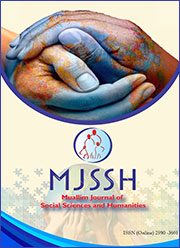

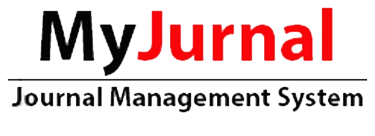


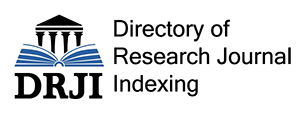
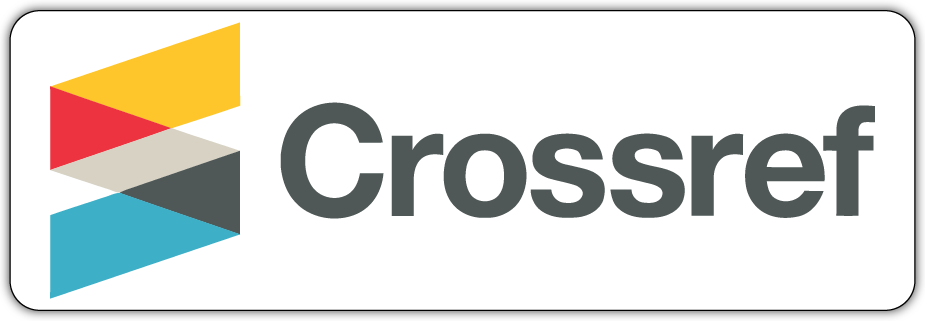
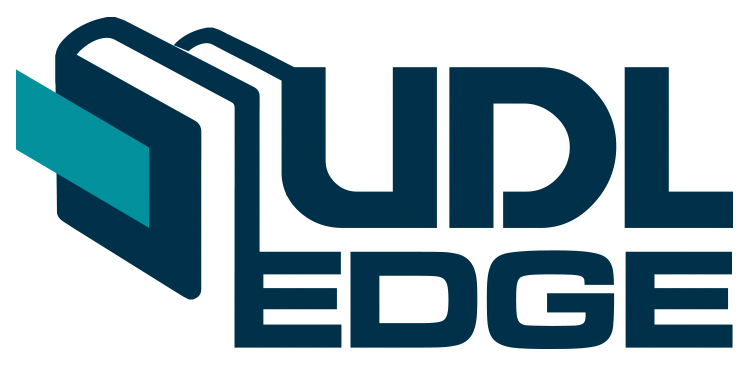





 This work is licensed under a
This work is licensed under a